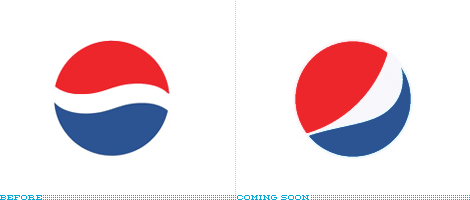Why Rebranding Is Risky & How Neuromarketing Can Help

Re-branding can be a scary, but often necessary, change.
Undergoing a re-brand, whether it be a seemingly simple logo redesign, like Pepsi rotating the circular icon in a failed attempt to depict a “cheeky smile’, or an overhaul of the brand’s positioning, like with Dove attempting to reposition itself as a company that encourages a diversified definition of beauty, is not for the faint of heart.

Before embarking on a re-branding mission, you need to seriously consider whether it’s necessary to do so in the first place. The risks associated with changing a time-honoured logo design, like with GAP clothing, or product design, like when Tropicana re-designed their packaging and saw sales drop by 20%, is something that can be avoided with meticulous thought and pre-planning.


If rebranding is definitely on the cards - your audience is changing with the times and you want to change with them - then companies need to tread carefully. Rebranding can potentially be detrimental to a business’s established reputation. There’s more to it than just slapping on a fresh coat of paint.
Why Companies Need To Be Careful When Rebranding
1 Poorly Executed Rebranding Can Confuse Your Audience
Customers are the lifeblood of a brand - if they don’t get it, they won’t buy it. When Gatorade decided to rebrand and label the drink just “G”, sales dropped by 13%. With shelves inundated with sports drinks, chances are that consumers just thought it was something else.

2 Rebranding Can Be a Massive Cost - Make Sure It’s Not a Liability
If not executed correctly, a rebrand can cost a company millions of dollars. When BP re-designed their iconic logo to take on the form of a green sun to represent their green growth strategy, people felt that BP was trying to be something it’s not because there is essentially nothing green about the oil industry. The cost of the logo redesign and it’s rollout cost the company $211,000,000. Quite an expensive mistake.

3 Rebranding Is Not Necessarily Linked To a Successful Outcome
After all the effort and money, your rebranding could have been in vain. Customers would have grown familiar with your brand and trust what it stands for, if you suddenly change it drastically overnight without warning, chances are you will lose the trust you have worked so hard to build in the first place. Unless you carry out the process seamlessly and involve your customers throughout the process, you are not guaranteed success.
Avoiding an epic rebranding failure is where Neuromarketing can play a key role. Many companies think that rebranding is more of an art than a science. But, science can perfect the art.
How & Why Neuromarketing Works in Rebranding
Neuromarketing is primarily focused on understanding how the brain responds to certain stimuli in marketing. Every time a company wants to revisit their marketing plan or rebrand, consumer neuroscience should be at the forefront.
Neuroscience has even prompted companies like Campbells to reimagine their packaging, after they discovered new information about how consumers respond to different textures. In this case, they found customers respond better to matte than shiny packaging.
Neuromarketing Has No Prejudices
There’s no doubt that a vital step in any rebranding exercise is conducting market research. Traditional market research would rely on questionnaires, intercept interviews and focus groups to gather consumer insights about how they feel about the new brand logo, image or packaging.
These methodologies could, however, lead to self-assessment bias resulting in false insights, as consumers are unable to accurately identify their true emotional responses and communicate them effectively. In some cases, results are also manipulated as a result of self-reporting bias.
Self-report bias happens when subjects subconsciously tell the researcher what they think they want to hear, or when they are influenced by other external factors, such as the interview facilitator or their fellow respondents.
David Ogilvy once said “Consumers don't think how they feel. They don't say what they think and they don't do what they say”, and this couldn’t be more true when they are trying to provide feedback to things that are abstract and conceptual, like what shade of green your new logo should be.
Fortunately in Neuromarketing, the data doesn’t lie.
Implicit Association Testing: Know what your consumers really think about you
With consumer neuroscience and biometric technologies, we are able to measure the implicit, subconscious responses of consumers as they happen in real time. By measuring their physiological and neurological responses to an experience, we can tell exactly what they feel about it.
With Electroencephalography (EEG), for example, we can assess the true implicit appeal of each brand asset based on it’s ability to induce approach motivation (desirability), cognitive load (the amount of mental effort being applied to the task at hand) and levels of emotional engagement achieved.
Implicit Association Testing is also an incredibly useful technique to assess distinctive brand assets. This methodology does not use a standard questionnaire process, but instead uses a set of descriptors and adjectives (statements) to describe a stimulus (in this case the previous and new brand identity elements).
To illustrate this, we will use Volvo as an example. Safety, Economy and Luxury are adjectives that could be used to describe Volvo (the stimulus). In Implicit Association testing, a subject would be flashed these adjectives and select, on an impulse, the adjective that describes Volvo best. We can make more accurate estimations as to what consumer attitudes are towards a brand or product and their resulting future buying behaviour.
Correlations between attitudes and behaviour are much higher among people with a fast reaction time when expressing their opinions. Going back to Volvo, the faster people select Safety, for example, the higher the association between Volvo and Safety.
If your company is considering a rebrand, don’t let it be an epic failure. Neuromarketing can help ensure your rebrand is a successful one.




